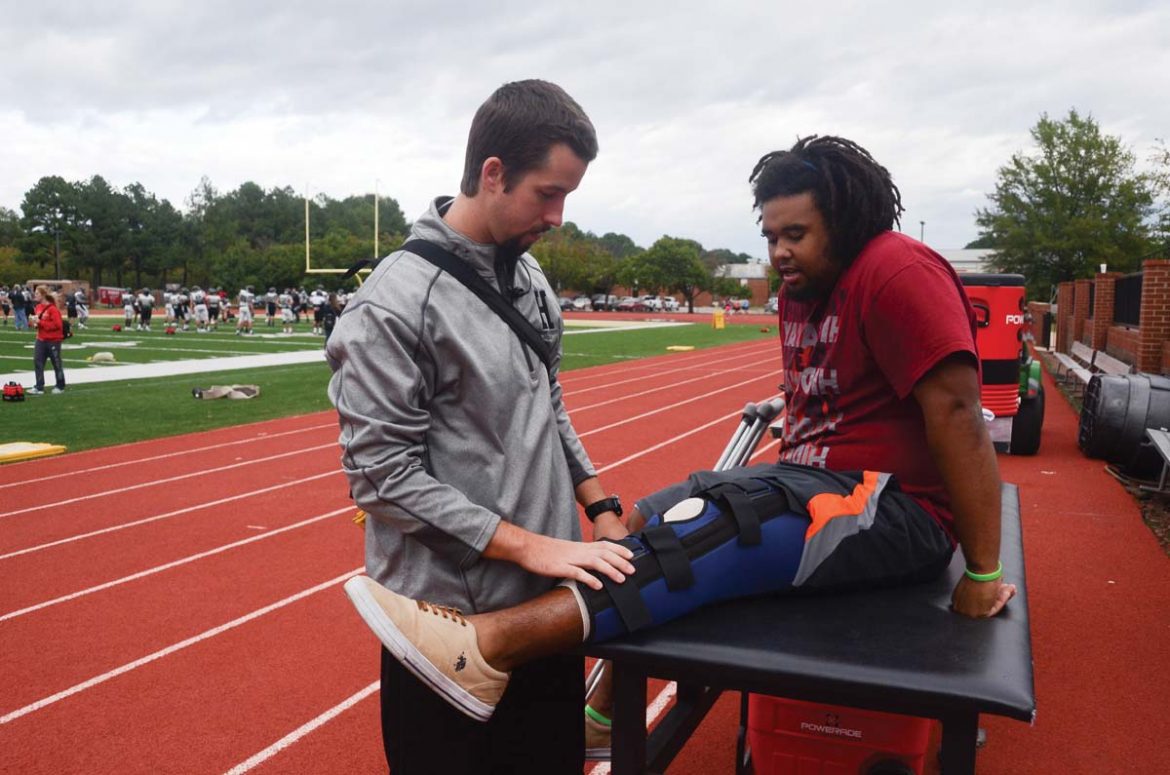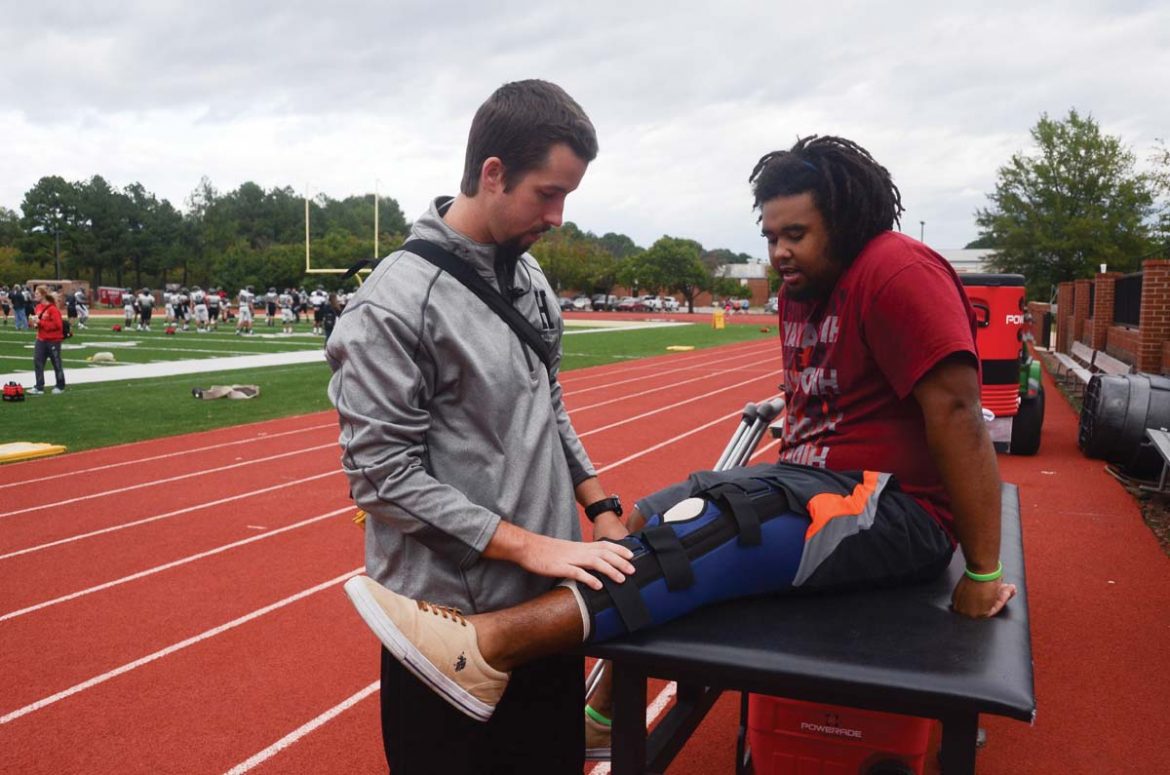Because collegiate athletes compete at the level and intensity they do, it is not uncommon for many of them to end up with a few injuries over the course of their college careers. All eyes are on the injured players as they hobble off of the field after receiving a crushing tackle, getting pegged with a fastball or butting heads with an opponent. Yet in those moments, it is the members of the athletic training staff who become the most important people on the field.
The athletic training staff consists of several faculty members, as well as athletic training students who help out at practices and games in order to fulfill part of their clinical assignment requirements. Eric Myers, a staff physical therapist and athletic trainer who serves as the rehabilitation coordinator for all of Harding’s teams, said he supervises five students.
“(Student athletic trainers) help our athletes by stretching, assisting, correcting (and) progressing their therapeutic exercise routines, protective taping and fetching a lot of ice bags,” Myers said. “They are a major help for me in the rehabilitation clinic, as we may have a dozen or more athletes at one time, and there is no way I could assist, observe and progress each athlete. The students are all an extra set of eyes and hands for me.”
Senior Zach Wickes, who has served as a student athletic trainer since his sophomore year, said athletic training students get the chance to observe and work with players and trainers in all of Harding’s competitive athletic programs.
“Each semester we’re assigned to different clinical assignments,” Wickes said. “So one time I might work with the baseball team. I’ll go to the baseball practices and set up for them, I’ll do injury evaluations that we come across. One time last fall, I was assigned to our rehab clinic, so any athletes who were injured, we are in charge of doing their rehabilitation and getting them back to return to play.”
Wickes said this fall he primarily works with the football team. His job during the season involves helping set up for practice, traveling with the team when necessary, doing rehab with players who are almost recovered from injuries and surveying the field to watch for injuries and acting as a sort of first responder. He said that in most cases, students start the athletic training program in the fall of their sophomore year and are required to work at least 200 hours every semester after that, with the exception of their last semester when they only have to work 100 hours.
Senior Bo Bryant, a student athletic trainer, said the clinical work he does allows him to physically help players and gain professional experience, but he said he also sees the work as a kind of ministry. He said it gives himself and others a chance to serve people on emotional, mental and spiritual levels.
“Athletic training is not just about helping athletes heal from physical pain,” Bryant said. “When athletes experience that physical pain, emotional, mental and spiritual pain usually follow along due to the fact that they cannot play. That’s where athletic training becomes a ministry and it is where I take the advantage to connect with the athletes on a deeper level.”

